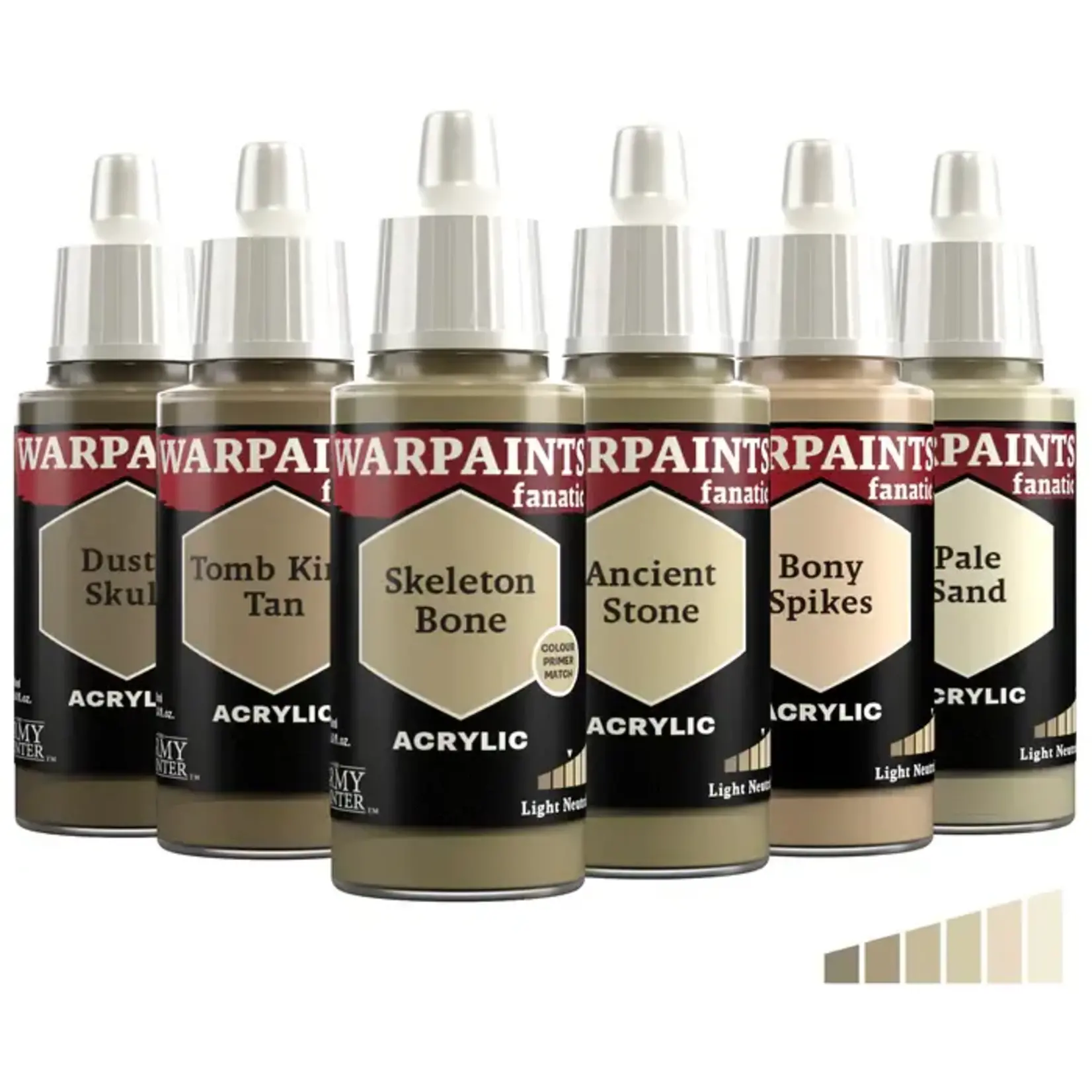The Flexible Triad: Light Neutrals is a versatile palette ideal for painting various materials and creating a realistic and aged look on various surfaces. With the range of colours in this triad, you can depict the worn fabric of desert nomads, the weather-beaten sails of a ship, or a monk’s dusty robes. The triad is also perfect for bones, skeletons, and details, such as simulating the wear, tear, dust, and sun-fading that occur over time on organic and inorganic materials.
The Light Neutrals Triad is suitable for projects across all genres of miniature painting, from historical and military figures to fantasy creatures and sci-fi models.
The Flexible Triad: Light Neutrals consists of:
- Warpaints Fanatic: Dusty Skull
- The Warpaints Fanatic: Dusty Skull is an olive brown that is effective as a strong neutral base tone. It’s the darkest tone from the “Light Neutrals” Flexible Colour Triad and its Practical Colour Name is “Strong Olive Brown”.
- Warpaints Fanatic: Tomb King Tan
- The Warpaints Fanatic: Tomb King Tan is a greyish olive brown that works well for dusty base tones and layers. It’s the second-darkest tone from the “Light Neutrals” Flexible Colour Triad and its Practical Colour Name is “Greyish Olive Brown”.
- Warpaints Fanatic: Skeleton Bone
- The Warpaints Fanatic: Skeleton Bone is a light olive brown that matches the Warpaint Air and Colour Primer of the same name. It’s one of the two middle tones from the “Light Neutrals” Flexible Colour Triad and its Practical Colour Name is “Light Olive Brown”.
- Warpaints Fanatic: Ancient Stone
- The Warpaints Fanatic: Ancient Stone is a pale olive brown that is suitable for layering and dry brushing bone and stone. It’s one of the two middle tones from the “Light Neutrals” Flexible Colour Triad and its Practical Colour Name is “Pale Olive Brown”.
- Warpaints Fanatic: Boney Spikes
- The Warpaints Fanatic: Boney Spikes is a very pale yellowing brown that is a versatile mid to high tone for neutral tones. It’s the second-lightest tone from the “Light Neutrals” Flexible Colour Triad and its Practical Colour Name is “Very Pale Yellowish Brown”.
- Warpaints Fanatic: Pale Sand
- The Warpaints Fanatic: Pale Sand is a yellowish white perfect for final highlights and mixing. It’s the lightest tone from the “Light Neutrals” Flexible Colour Triad and its Practical Colour Name is “Yellowish White”.
The Flexible Colour Triad System is a segment, or family, of six colours that range from dark to light with a consistent hue. This system allows you to easily select paints that create a natural colour progression on your miniatures. This is an easy way to create a colour scheme for your miniature when army painting because you always have 27 Flexible Triads to choose from instead of mixing colours.
The system builds upon the traditional triad system by introducing more versatility and adaptability in colour selection, expanding the conventional three colours to six. This gives you almost endless possibilities for putting colours together within the triad.
When using a triad system, you usually select 3 colours (a base, a shade, and a highlight), depending on the level of contrast you want on your miniature. For instance, for minimal contrast, opt for 3 adjacent colours to achieve a smooth colour transition. For maximum contrast, use the lightest, middle, and darkest colour available in the flexible triad.








